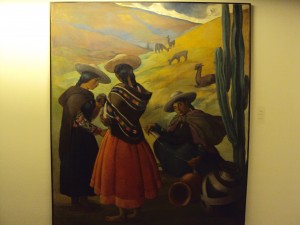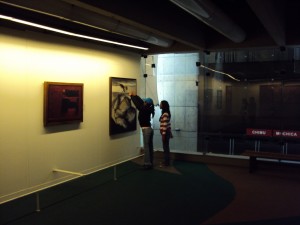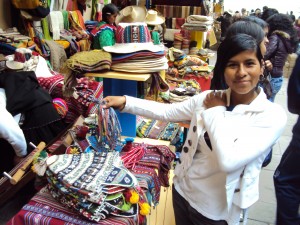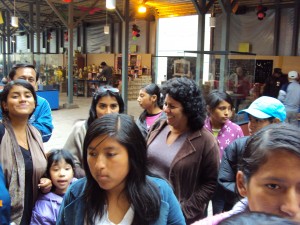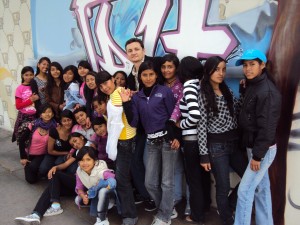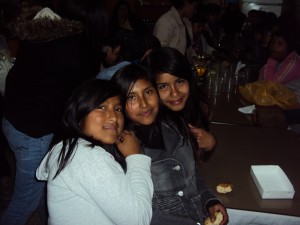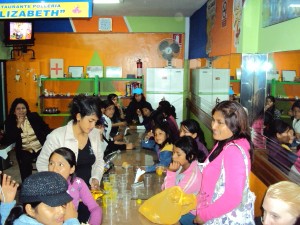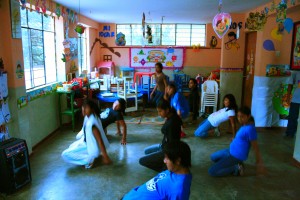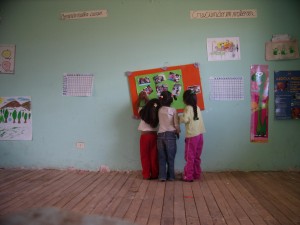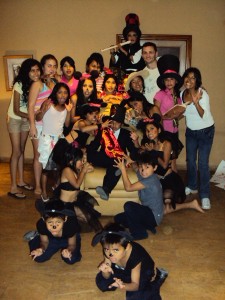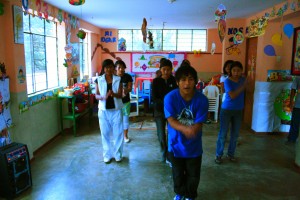To celebrate Independence Day in Peru I took the Westfalia Orphanage English class to El Museo de la Nacion in Lima Peru. It was the first time that the kids got to see the huge national museum and get a sense of the history of Peru. The exhibits are housed in vast salons spread over 3 floors and are ordered chronologically which is very helpful for getting to grips with the many cultures dispersed across Peru. There is also a comprehensive range of traditional costumes from around the country and miniature models depicting life in pre-Conquest times as well as a good collection of ceramics and mummies.
There was a lot of commotion and giggling in the elevator as it was the first time for some of the kids. It was really funny hearing them laughing and grabbing their stomachs when the elevator went up.
There was a also a great fereria out back selling traditional Peruvian wares such as chuyos, manta Inca, wawas and ceramics which the kids loved. They also got to observe the artists at work.
Help make trips like this possible for the kids of Westfalia Orphanage and other kids in need in Peru by telling your friends about sonrisas or making a donation to help with the ongoing costs involved in the projects. Thanks!
The kids from Westfalia Orphanage had their dance performance after their 3 month block lessons. They had lessons every week and were continually practicing in their spare time for the performance. We caught the bus from Cieneguilla, a small district in the hills on the outskirts of Lima. After an almost 2 hour bus ride we connected to the new Metropolitano Bus system and caught the bus to Chorillos, a beach suburb of Lima.
After a short walk we were at Angels D1 dance School. We met our two dance teachers and they gave us a tour of the dance school. After looking around the girls began some practice. They were extremely nervous being at one of Lima`s best dance schools with professionals and a big audience yet extremely excited at the same time.
After watching a performance from another group it was the girls` turn.
Watch them in action —> Westfalia Orphanage dance performance Lima Peru
The performance was amazing, especially considering they only had 12 official classes to learn the routine. I was really proud of them. They were all so excited, it was really amazing to see them so happy. We watched a little bit of the next performance but had to leave for the long journey home. After finally being able to drag them out of the school we had some food at a local restaurant before the almost 3 hour bus rides home.
On the bus the girls couldn`t stop talking about the performance. It was an amazing day. A big thanks to Paola, the teachers and staff at Angels D1 dance School in Lima for their help. And a special thank you to those who have donated money to make these lessons possible. Without donations it would be impossible to have the dance classes or any other outings or activities for the kids. Thanks! And if you have a spare $10 in your wallet, please help us help these kids by clicking here.
Sonrisasenperu provides hip-hop, modern and breakdance classes for the kids at Westfalia Orphanage. Arguably they are the most popular class we provide to Westfalia, located in the hills of Cieneguilla on the outskirts of Lima, Peru. The kids are crazy about the classes, learning a lot and taking away more than just new dance moves.
We hire the dance teachers from the famous Angeles D-1dance group in Lima, itself a successful collaboration of street kids on dance scholarships. The kids can really relate to the young dance teachers and know that anything is possible with hard work and dedication. While the classes are a great way to learn new skills for the children of Westfalia Orphanage, they are also an amazing confidence builder. The kids take a sense of achievement and pride from the classes as well as a lot of fun!
We need your help to continue providing these classes as well as the other programs we run. Help us make a difference by clicking the donate button. Every dollar helps!
June marks 6 months since sonrisasenperu.org was created. In this time Sonrisas has been involved in several schools as well as Westfalia Orphanage providing funds, educational materials such as texts, books, writing equipment, clothes, shoes and food. We’ve also provided classes teaching English, dance, drama and swimming.
Sonrisas continues to provides the poor, rural communities with assistance, both educational and the simple necessities such as clothing and food. In terms of education we seek to reduce the burden of the cost of studying on families already struggling to make a living. Rural Peru is a very poor place where some children don’t receive any kind of education, instead made to work in the fields with the parents. Simply minimizing or removing the cost of studying is one less barrier for the parents in being able to provide their children with some sort of education.
I remember arriving in Peru and sitting at my desk for several days with a pen and paper just wondering where to begin. How could i help these schools? How was i going to find the funds to provide the help for these communities? It was a very perplexing time but deep down i knew that i would one day look back upon these obstacles and laugh at how worked up i got. Slowly but surely the projects have grown and sonrisasenperu has made a real difference in the lives of so many.
Sonrisas has been able to make this difference with the support and help of people like yourself! People who see the website, see the photos of the differences we are making and help in any way they can…whether it be a donation, sending clothes or materials, or simply telling your friends about the site. So i want to thank everybody who has donated money, clothes, resources and time to the project as well as those simply following the site, the facebook page and spreading the word.
I would also like to thank some people who have helped me with the operation of sonrisas. First-and-foremost to my friend Lee Giddins, creator of www.loneleeplanet.com. Lee spent many hours helping create the site, he was the first financial contributor by donating the domain name sonrisasenperu.org, he hosts the site on his domain, and continues to help me with the technical aspects of the site…all at no cost! I couldn’t be doing what I’m doing without his amazing help.
Thank you to John and Tisha Kelly of The Parlour Irish Bars of New York (www.theparlour.com) for their financial help with the first shoe drive and for all their help in NYC. Thanks to two other former Irish pub bosses Paul O’Brien of P.J.O’Brien’s Irish Pubs in Australia (www.pjobriens.com.au) and Chris Shine for their support.
Thanks to David Olano and Paola Vecco for their friendship and help in Peru. David, thanks for the Spanish translations! And Paola thanks for your help with the dance teachers at Angeles D1 dance company and to your amazing parents and household for always opening their doors to me and the kids. Thanks Camilla Vecco for your amazing job teaching drama at Westfalia. I’m always amazed at the high quality work you do and the kids love you! Thanks to Doris Galloso and Melena Miljanovich of The Lions Club Cieneguilla for your help and introductions to the schools. And Male thanks for always giving your time and even opening up your house to the kids from Westfalia! They are always asking about you!
Thanks to Becky May for your help with the initial wording of the site, Lan Dai Zuppa for coming up with the sonrisas name! Thanks Arturo for midnight runs to the airport and your continued support of Westfalia Orphanage. Thanks to Bec Shadbolt and the students from Canterbury College of Brisbane, Australia for lugging almost 10 bags of clothes, books and materials over 30 hours of flights for the kids (photos to come!). Big thanks to Naomi for all your support and great advice! And thanks to Bronwyn Tutty, Noela, Matty Bart, Annie Tran, my Aunty Kris and Mardie, my Uncle Bobby Barr, Eva Wayne and her work crew, all my New York friends, Kerin & Jordan, Pamela, and everybody who has donated and helped make a difference here in Peru. Thank you for all your help and the countless others who make sonrisasenperu.org possible!
Machu Picchu is a pre-Columbian Inca site located 2,430 metres (7,970 ft) above sea level. It is situated on a mountain ridge above the Urubamba Valley in Peru, which is 80 kilometres (50 mi) northwest of Cusco and through which the Urubamba River flows. Although there are numerous theories on the exact purpose of the site, most archaeologists believe that Machu Picchu was built as an estate for the Inca emperor Pachacuti (1438–1472). Often referred to as “The Lost City of the Incas”, it is the most familiar icon of the Inca World.
The Incas started building the estate around AD 1400 but it was abandoned as an official site for the Inca rulers a century later at the time of the Spanish conquest of the Inca Empire. Although known locally, it was unknown to the outside world before being brought to international attention in 1911 by the American historian Hiram Bingham. Since then, Machu Picchu has become an important tourist attraction.
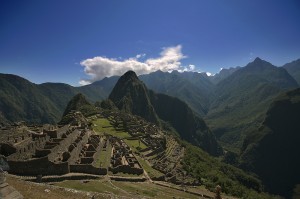
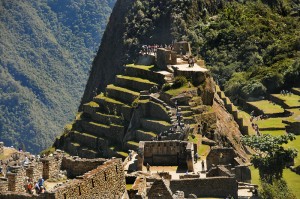
Machu Picchu was built around 1450, at the height of the Inca Empire. It was abandoned just over 100 years later, in 1572, as a belated result of the Spanish Conquest. It is likely that most of its inhabitants were wiped out by smallpox before the Spanish conquistadores arrived in the area, and it appears that they were aware of a place called Piccho although there is no record of the Spanish having visited the remote city. The Conquistadors defaced sacred rocks in other locations but they are untouched at Machu Picchu.
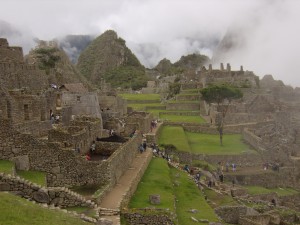
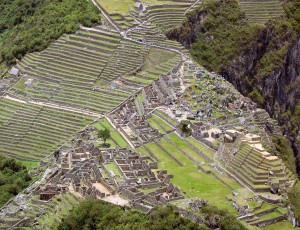
One of the earliest theories about the purpose of the citadel, by Hiram Bingham, is that it was the traditional birthplace of the Incan “Virgins of the Suns”. Research conducted by scholars, such as John Rowe and Richard Burger, has convinced most archaeologists that Machu Picchu was an estate of the Inca emperor, Pachacuti. In addition, Johan Reinhard presented evidence that the site was selected because of its position relative to sacred landscape features such as its mountains, which are purported to be in alignment with key astronomical events that would have been important to the Incas.

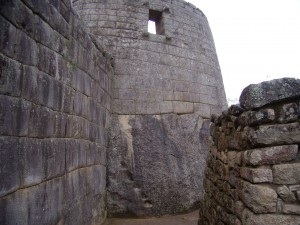
Although the citadel is located only about 80 kilometers (50 miles) from Cusco, the Inca capital, it was never found by the Spanish and consequently not plundered and destroyed, as was the case with many other Inca sites. Over the centuries, the surrounding jungle grew over much of the site, and few knew of its existence. On July 24, 1911, Machu Picchu was brought to the attention of scholars by Hiram Bingham, an American historian employed as a lecturer at Yale University. Bingham was led up to Machu Picchu by a local 11 year old Quechua boy named Pablito Alvarez. Bingham undertook archaeological studies and completed a survey of the area. Bingham coined the name “The Lost City of the Incas”, which was the title of his first book.
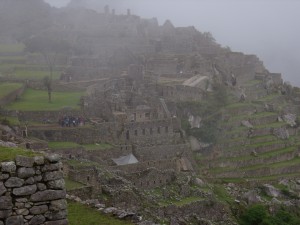
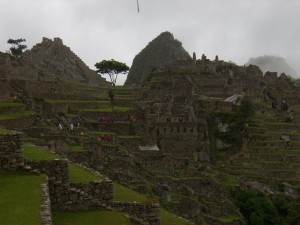
The stones, as in most handsome buildings throughout the Inca Empire, used no mortar. These stones were cut so precisely, and wedged so closely together, that a credit card cannot be inserted between them. Aside from the obvious aesthetic benefits of this building style, there are engineering advantages. Peru is a seismically unstable country and Machu Picchu itself was constructed atop two fault lines. When an earthquake occurs, the stones in an Inca building are said to “dance”; that is, they bounce through the tremors and then fall back into place. Without this building method, many of the best known buildings at Machu Picchu would have collapsed long ago. While the Inca are best remembered for their beautiful walls, their civil engineering projects were incredibly advanced as well. (Especially, as is often noted, for a culture that used no draft animals, iron tools, or wheels.) Machu Picchu had to be sculpted out of a notch between two small peaks by moving stone and earth to create a relatively flat space. The engineer Kenneth Wright has estimated that 60 percent of the construction done at Machu Picchu was underground. Much of that consists of deep building foundations and crushed rock used as drainage. (As anyone who’s visited in the wet season can tell you, Machu Picchu receives a lot of rain.). Machu Picchu is Peru’s most important and most visited tourist site, receiving around 1 million visitors annually and has been declared a UNESCO World Heritage Site.
Sonrisasenperu.org is providing ongoing drama and acting classes to the children of Westfalia Orphanage. The kids have classes every week and are working toward performing a show at the end of classes.
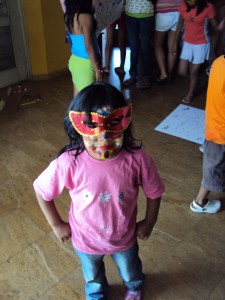
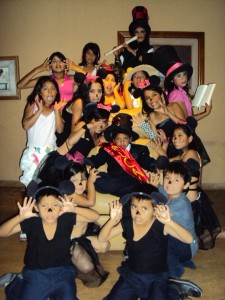
Children often evaluate their self-worth and make judgments about their abilities based on experiences they have in their lives. Lacking a family, coming from very difficult situations and living in an orphanage often limits this self-worth. These classes are a means to develop the children’s self-confidence, and we hope to help them to believe in themselves and know that people do care about them.

Sadly it is becoming more and more difficult to continue to provide the funds to run these classes. Ongoing costs include the pay and transport for the dance and drama teachers, materials for the classes as well as transport for the children. We desperately need your help to continue to help these kids so if you have ever thought about helping out a great cause, now is the time! Every dollar helps.
Make a difference from as little as $5 by clicking the donate button.
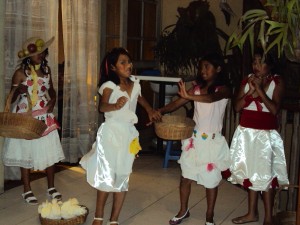
Sonrisasenperu.org is providing two English classes per week to the children of Westfalia Orphanage. The purpose of the classes is to give the kids an extra skill that will help them in life after the orphanage and, like the swimming, dance and drama classes we provide, give them self-confidence and know that people do care about them.
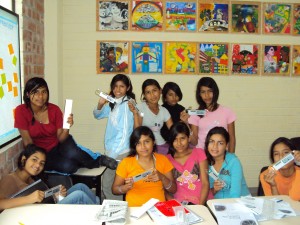
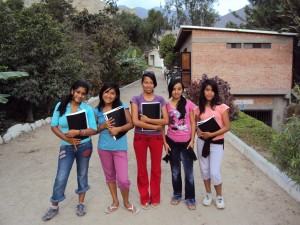
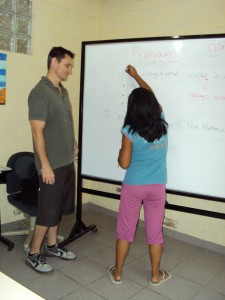
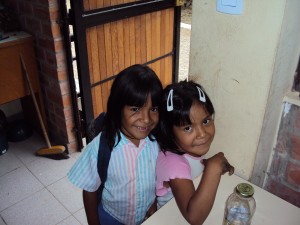
Providing these ongoing English classes as well as the dance, drama and swim classes incur ongoing costs. So make a difference by clicking the donate button.
As well as the ongoing dance, drama and English lessons, sonrisasenperu.org is providing swimming lessons for the children of Westfalia Orphanage. Twice a week we take the children to the local swimming pool and provide learn-to-swim classes as well as basic water safety. As well as building the kids’ confidence in and out of the water it allows a fun break from the 24/7 life at the orphanage.


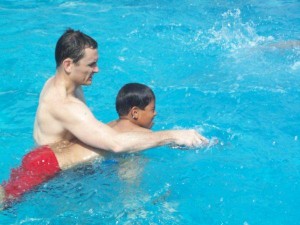

Providing these ongoing classes incur costs such as payment for the dance and drama teachers as well as their transport costs to remote Cieneguilla, English textbooks and materials, pool entrance fees, purchase of floats for the smaller children, etc.
You can help by clicking the donate button. Or read more about Westfalia Orphanage.
Recently I was honoured to write a guest post about the Peruvian-Japanese over at loneleeplanet. During my time living in Peru I have always been curious about the large number of Peruvians of Japanese descent (including former president Alberto Fujimori, born in Peru of Japanese parents), not to mention the strong influence of Japanese cuisine in the national diet.
I soon discovered that Peru has a long history of Japanese immigration. On April 3, 1899, some nine years before emigration to Brazil began (Brazil has the highest population of Japanese outside of Japan with 1.5 million), a group of 790 Japanese became the first to emigrate to Peru. Today they constitute around 0.3% of Peru’s population (estimated at nearly 90,000 in 2008) which is the second largest population of people with Japanese ancestry in Latin America after Brazil.
Read more of this fascinating piece of history in my article at Nikkeijin – The Japanese Peruvians.
Check out the amazing pics in the embedded video below.
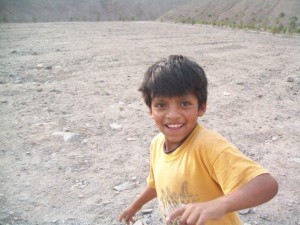
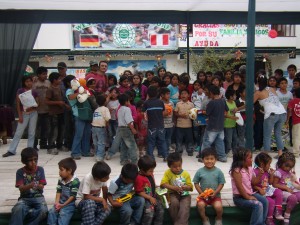
Education is the easiest way for people to break out of the cycle of poverty. As well as supplying food and clothing to those in poverty, Sonrisasenperu.org aims to give those living in poverty the skills to have better opportunities in life. We have been sponsoring various classes for the children of Westfalia orphanage for over 3 years now. Situated in the dusty, dry hills 1 1/2 hours out of Lima, the orphanage is very remote and there are no shops, cinemas, parks or other such activities the children can get involved in.
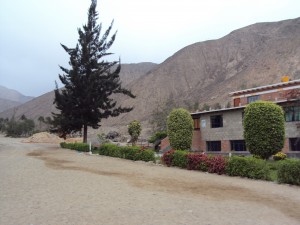
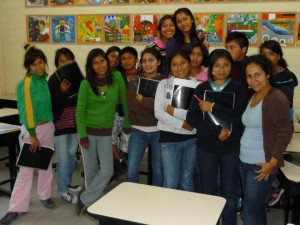
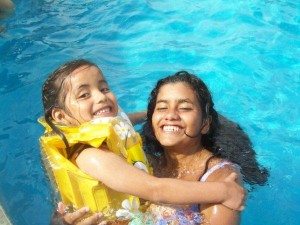
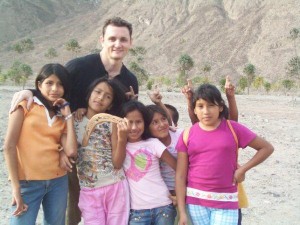
We are currently organizing English classes, swimming classes and dance workshops (fusing different styles such as hip hop, salsa and traditional Peruvian dance). If you would like to help these projects, or any of the other projects we manage, you can help by clicking the donate button.



